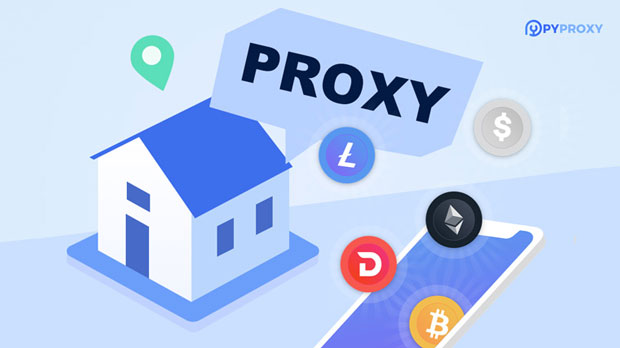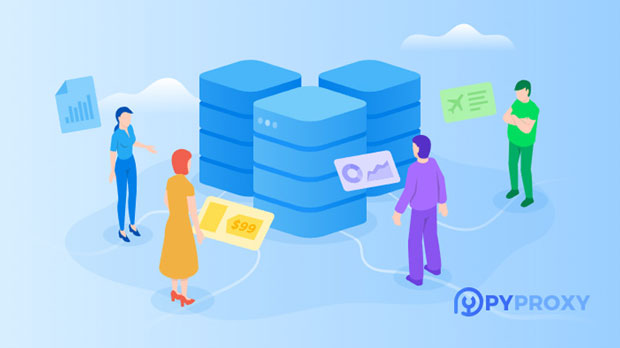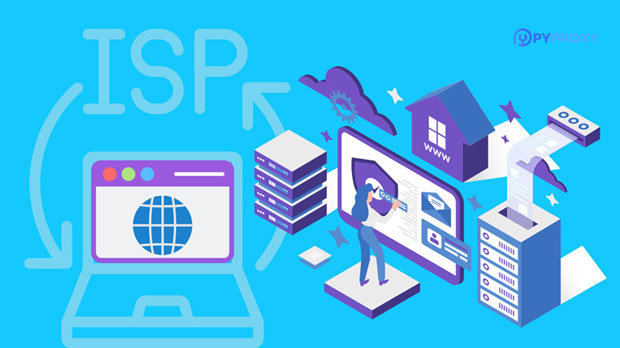How can I check the currently used proxy IP from the command line?
In today’s internet-driven world, many people use proxies to enhance their online privacy and security, as well as to access restricted content. A proxy server acts as an intermediary between a user and the internet, masking the user's real IP address. Sometimes, it’s important to verify the proxy ip being used by your system to ensure it’s working correctly or to troubleshoot potential issues. The good news is, you can easily check the current proxy IP using command-line tools, whether you’re on a Windows, Linux, or macOS system. This article will guide you through the steps and provide valuable insights on how to achieve this. Why Check Your Proxy IP?Before diving into the command-line methods, it’s crucial to understand why you might want to check your proxy IP. Using a proxy changes your IP address to the one associated with the proxy server. This can be useful for a variety of reasons, such as bypassing geo-restrictions, maintaining anonymity online, or enhancing security by masking your real IP.However, in some cases, you might need to ensure that your proxy is configured correctly, is working properly, or that the IP address is as expected. For example, when troubleshooting internet connectivity issues, checking the proxy IP can help you verify whether the proxy server is causing the issue. Additionally, some websites or services may restrict access based on IP addresses, so knowing which IP address is being used helps you avoid being blocked.Understanding the Command Line Interface (CLI)The Command Line Interface (CLI) is a text-based tool that allows users to interact with the computer system directly through commands. For many users, the idea of using the command line may seem intimidating, but it is an extremely powerful tool for troubleshooting and system management.In the context of proxy IP checking, the CLI provides various commands that allow you to gather information about your network configuration and any active proxy settings. Since different operating systems use different tools and commands, it’s important to know which command to use for your specific system.Checking Proxy IP in WindowsWindows provides a few different methods to check your current proxy settings through the command line. Let’s go through one of the most straightforward methods.1. Using the Command Prompt: The easiest way to check your proxy IP on Windows is by using the Command Prompt. Follow these steps: - Press `Win + R` to open the Run dialog. - Type `cmd` and hit Enter to open the Command Prompt. - In the Command Prompt window, type the following command: ``` netsh winhttp show proxy ``` - Press Enter. This command will display the proxy server details currently in use by Windows, including the proxy ip address. 2. Interpreting the Results: When you run the command, the output will show whether a proxy is being used. If a proxy is configured, it will display the IP address of the proxy server and the port number. If no proxy is configured, it will indicate that the system is not using a proxy.Checking Proxy IP in LinuxIn Linux, there are several methods to check the proxy settings using the command line. The most common approach is to check the environment variables, as Linux systems often use these variables to store proxy settings.1. Using the Echo Command: You can use the `echo` command to check the value of the proxy-related environment variables. To do this, open the Terminal and run the following command: ``` echo $http_ PYPROXY ``` This will return the current HTTP proxy address if one is configured. Similarly, you can check for other proxy types by using: ``` echo $https_pyproxy ``` If the proxy is set, it will display the proxy’s IP address and port number. If nothing is returned, it means there’s no proxy configured for that protocol.2. Checking Proxy Settings for Specific Applications: Many Linux applications, such as `wget` or `curl`, also use environment variables for proxy configuration. To check the proxy for `wget`, for example, you can look into its configuration file or check for proxy settings by running: ``` wget -d ``` This will provide debugging output, which includes the proxy information if configured.Checking Proxy IP in macOSmacOS users can also check their proxy settings through the Terminal application, which provides easy access to system configurations.1. Using Network Settings in Terminal: On macOS, you can use the following command to check for proxy settings: ``` networksetup -getwebproxy Wi-Fi ``` Replace `Wi-Fi` with the relevant network service name if you are using a different connection. This command will show you the proxy server settings, including the proxy IP and port number.2. Using System Preferences: If you want a more user-friendly way to check your proxy settings, you can open the System Preferences, go to Network, select your active connection, and then click on Advanced. Under the Proxies tab, you will find the configuration for various proxies like HTTP, HTTPS, FTP, etc.What to Do If Your Proxy IP Isn’t Showing Up?If, after running the appropriate command for your operating system, no proxy information is displayed, it could mean that no proxy is currently configured. Alternatively, the proxy settings might be hidden or managed by a system administrator, especially in corporate environments.In such cases, you may need to manually configure your proxy settings or consult with your IT department to get more information. Additionally, some applications or browsers may use their own proxy settings, independent of the system-wide configuration, so checking individual application settings might be necessary.Advanced Techniques for Proxy CheckingIn some scenarios, simply checking the proxy settings through the basic command-line methods may not provide enough information. Here are a few advanced techniques you can use:1. Traceroute to Detect Proxy: By using a `traceroute` command, you can trace the route your data packets take to reach a specific server. If a proxy is in use, you might notice that the trace stops at the proxy server’s IP rather than directly reaching the final destination. For example, on Linux or macOS, you can use: ``` traceroute pyproxy.com ``` This will help you visualize whether a proxy is intervening in the communication process.2. Curl to Verify Proxy IP: Using `curl` can help verify your proxy IP by showing the IP address used in the requests. You can run a simple `curl` command to check which IP address your system is sending out to the internet: ``` curl ifconfig.me ``` This will display the public IP address you’re using, which should match your proxy IP if it is correctly configured.ConclusionChecking your proxy IP using the command line is an essential skill for maintaining secure and efficient internet access. Whether you are troubleshooting, ensuring anonymity, or bypassing geo-restrictions, verifying your proxy IP can help you stay on track. By following the steps for your specific operating system—be it Windows, Linux, or macOS—you can easily determine which proxy IP is currently in use. In case no proxy is configured, understanding how to set one up or troubleshoot further can help you get back on track.
2025-02-04
























































